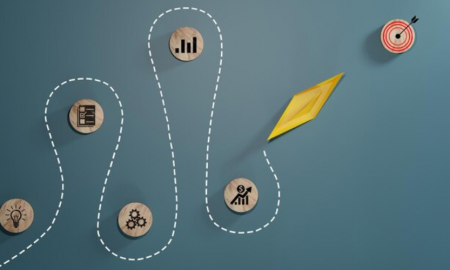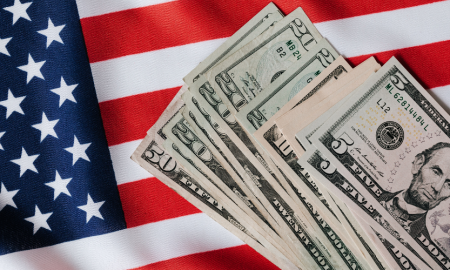Unsecured Loans: A Deep Dive
When financial needs arise, borrowing money can provide a solution. But which loan products make the most sense for your situation? Unsecured loans allow borrowing without pledging collateral, offering convenience and flexibility. However, approval is not guaranteed. Learn how unsecured loans work, their pros and cons, and tips for getting approved.
What Are Unsecured Loans?
Unsecured loans represent borrowing based on your creditworthiness alone, without securing the debt against property or other assets. Since no collateral is required, unsecured loans may also be called “signature loans” or “good faith loans” – you simply sign a promise to repay.
Unsecured loans include credit cards, personal loans, and student loans. With these products, lenders have no direct claim on your assets if you default. However, they can pursue collection through legal action.
Types of Unsecured Loans
You can access unsecured borrowing through different loan types depending on your financial needs:
Personal Loans:
Image by rawpixel.com on Freepik | Personal loans allow you to borrow a lump sum of anywhere from $1,000 to $100,000 for nearly any personal expense.
Probably the most flexible unsecured loan option, personal loans allow you to borrow a lump sum of anywhere from $1,000 to $100,000 for nearly any personal expense. From consolidating high-interest debt to financing home improvements, personal loans offer versatile solutions.
Student Loans:
Designed to fund higher education costs, student loans come in two main types – federal and private. Federal loans are funded by the government, while private lenders issue private student loans. Both provide unsecured education financing.
While limited to school costs, student loans do ease access to higher sums, often with deferred repayment until after graduation.
Credit Cards:
Credit cards give revolving access to an unsecured line of credit up to a set limit. You can continually borrow, repay and reuse available credit as needed. Many cards come with 0% introductory rates, rewards programs, and other borrower-friendly features.
How Do Unsecured Loans Work?
While sharing the lack of collateral, unsecured loan types differ in how they work:
Personal Loans:
After qualifying and approval, the lender issues the full loan amount upfront in a lump sum. You then make fixed monthly payments over a set repayment term, usually two to seven years. Interest rates are generally fixed as well.
Student Loans:
Like personal loans, approved student loan sums get disbursed in one lump allotment. But the money typically goes directly to your school to pay tuition, fees, and other education costs first.
Repayment terms range from 10 to 25 years, often with deferment while attending school. Federal rates are fixed, but private loans can be fixed or variable.
Credit Cards:

Freepik | stefamerpik | Credit lets you borrow money as needed – up to your approved limit.
This revolving credit provides flexible, as-needed access to borrowing up to your approved credit limit. You can carry balances month-to-month or pay in full to avoid interest charges. Minimum monthly payments are required, but you decide on the timing and amounts beyond that.
Comparing Unsecured vs. Secured Loans
The key distinction between unsecured and secured loans comes down to the collateral requirement. To understand the difference, let’s compare a few examples:
- Mortgages are secured loans, with your home acting as collateral. The lender can foreclose and sell your home to recover unpaid mortgage debt.
- Auto loans also represent secured borrowing, with the lender able to repossess your car if you default.
- Even secured credit cards require an upfront cash deposit that acts as collateral and can be seized to cover unpaid balances.
In all these cases, specific property secures the loan. The lender has a lien on the home, car, or deposit funds and can take possession of those assets in a default scenario.
Conversely, unsecured loans lack collateral. Your creditworthiness alone qualifies you to borrow. While legal collection is possible after default, the lender cannot directly seize your property or assets.
However, this added risk means borrowers often face stricter eligibility requirements, like high credit scores and higher interest rates on unsecured loan products.
The Pros and Cons of Unsecured Loans
Unsecured borrowing offers advantages but also some potential drawbacks to consider:
Pros:
- No need to pledge collateral assets
- Quick and streamlined application process
- Funds are accessible for flexible purposes, except for student loans
- Lower chance of losing personal property if you default
Cons:
- Stricter approval criteria than secured loans
- Higher interest rates compared to secured alternatives
- Lower maximum loan amounts available
- Bleak recourse options for lenders if you default
Tips for Qualifying for an Unsecured Loan
When applying for unsecured loans or credit cards, lenders scrutinize certain factors to screen applicants:
- Credit History – A record of consistent on-time payments helps demonstrate creditworthiness. Longer established credit and a healthy mix of account types also looks better.
- Credit Scores – Most lenders require good to excellent scores in the 690 to 850 range. The higher your score, the better your chances.
- Income Levels – Steady, verifiable income is important, as lenders want to see you can afford repayment. Many lenders have set minimum income requirements.
- Debt-to-Income Ratio – Lenders analyze your current debt obligations against gross monthly income. Lower DTI ratios often translate into loan approval.
Follow these tips to boost your chances of qualifying:
- Maintain on-time payments and low credit card balances
- Build credit history with responsible use of loan and card products
- Correct any errors on your credit reports
- Pay down existing debts to lower your DTI ratio
- Hold off on new credit applications until after you apply for the unsecured loan
The Unsecured Loan Application Process
Freepik | rawpixel.com | Unsecured Loan Process is simple and easy.
Ready to move forward? Here are the usual steps in the application process:
- Prequalify: Many lenders allow soft prequalification checks without a hard credit inquiry to estimate potential loan terms. Prequalifying helps you compare options.
- Apply: Once you select a loan provider, formally apply by submitting your full application and required documents. Much of this can be done online.
- Wait for an Approval Decision: Give the lender a day or two to underwrite and decide on your application. Check your email often for status updates.
- Get Your Funds: If approved, the lender will explain when and how you will receive your loan proceeds or credit access. Be ready to make the first payment within 30 days.
Crafting Financial Freedom With Unsecured Loans
In the grand tapestry of financial solutions, unsecured loans emerge as threads of liberation, weaving flexibility and convenience. As you embark on your financial journey, the allure of unsecured loans beckons, promising a gateway to financial freedom.
Tailor your approach, aligning with your needs, and witness the magic unfold as unsecured loans redefine the contours of financial possibility.
More in Loans & Mortgages
-
Cap Table Management Firm Pulley Gets Featured on Forbes’s Top 50 Fintech Startups
Pulley, a San Francisco-based cap table management firm, is swiftly gaining momentum, challenging industry giants and redefining the landscape for startups...
February 27, 2024 -
Redefining Your Path: 6 Essential Steps for Career Reengineering
So, you’re at a crossroads in your career, contemplating a change that could redefine your professional path or perhaps dreaming of...
February 19, 2024 -
How to Get Back to Work After a Career Break | 5 Tried & Tested Tips
Taking a career break can feel like you have hit the pause button on a movie. The world continues to move...
February 10, 2024 -
Small-Cap Stocks Could Be Your Biggest Win in 2024 – Here’s Why
In the stock market, where titans like the S&P 500 often steal the spotlight with their record-breaking performances, it is easy...
February 3, 2024 -
4 Things We Learned From the 2024 Golden Globes: A Night of Surprises and Inspirations
The 81st Golden Globes, held on January 7, 2024, was an event that transcended the boundaries of a typical awards ceremony....
January 26, 2024 -
The Path to Wealth: How 3 Productivity Tips Led Me to Multimillionaire Heights
In the pursuit of success, one often encounters the timeless question: How do successful individuals maintain such high levels of productivity?...
January 20, 2024 -
Exciting Career Horizons in 2024: Is Now Your Moment?
As we step into the vibrant landscape of 2024, a question bubbles up in the minds of many: “Is now the...
January 9, 2024 -
Here Are the Top 5 Nickel Stocks to Buy
As you venture into the intriguing world of investing, there is a shiny sector that deserves your attention: Nickel stocks. First...
December 31, 2023 -
Top 5 Websites to Show Off Your Side Hustle Portfolio
In the dynamic world of side hustles, having a captivating portfolio is like having a key to a treasure trove of...
December 18, 2023















You must be logged in to post a comment Login